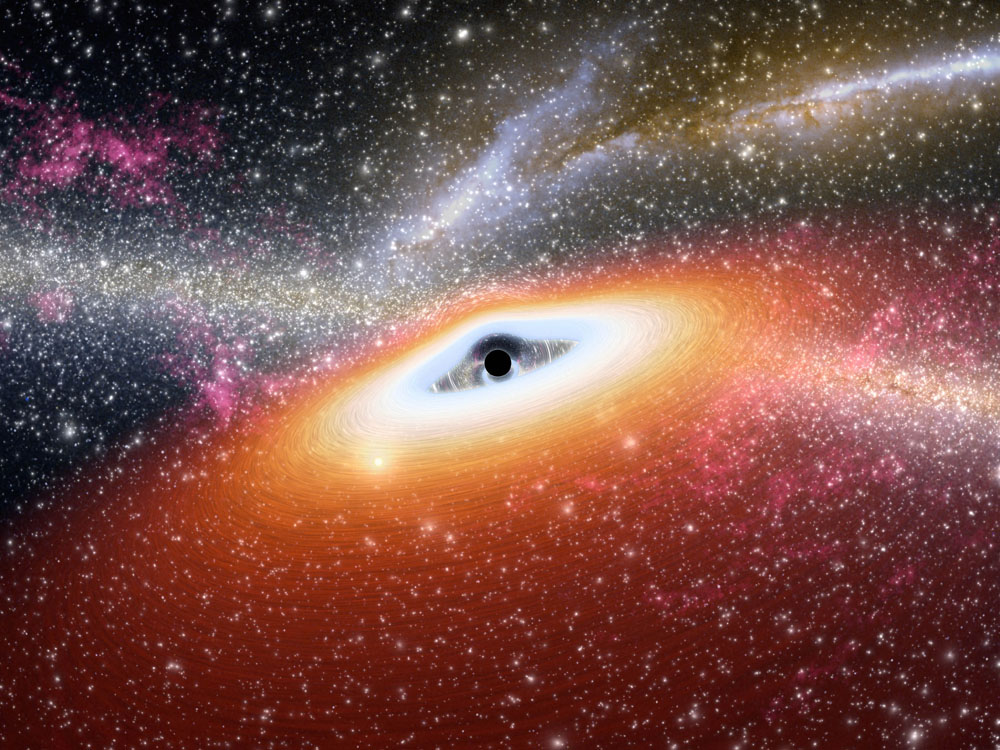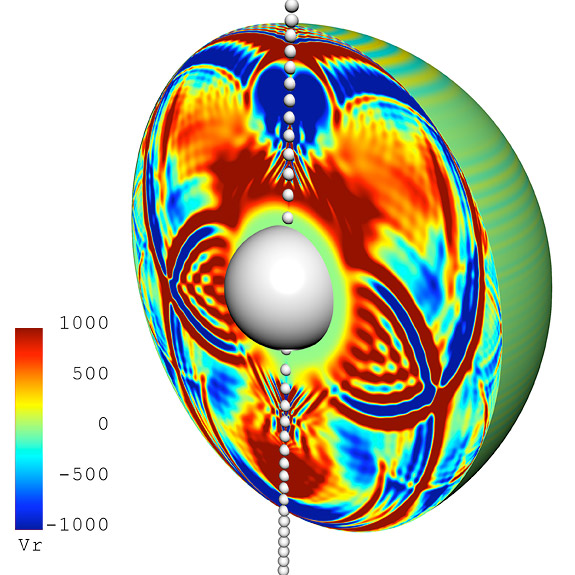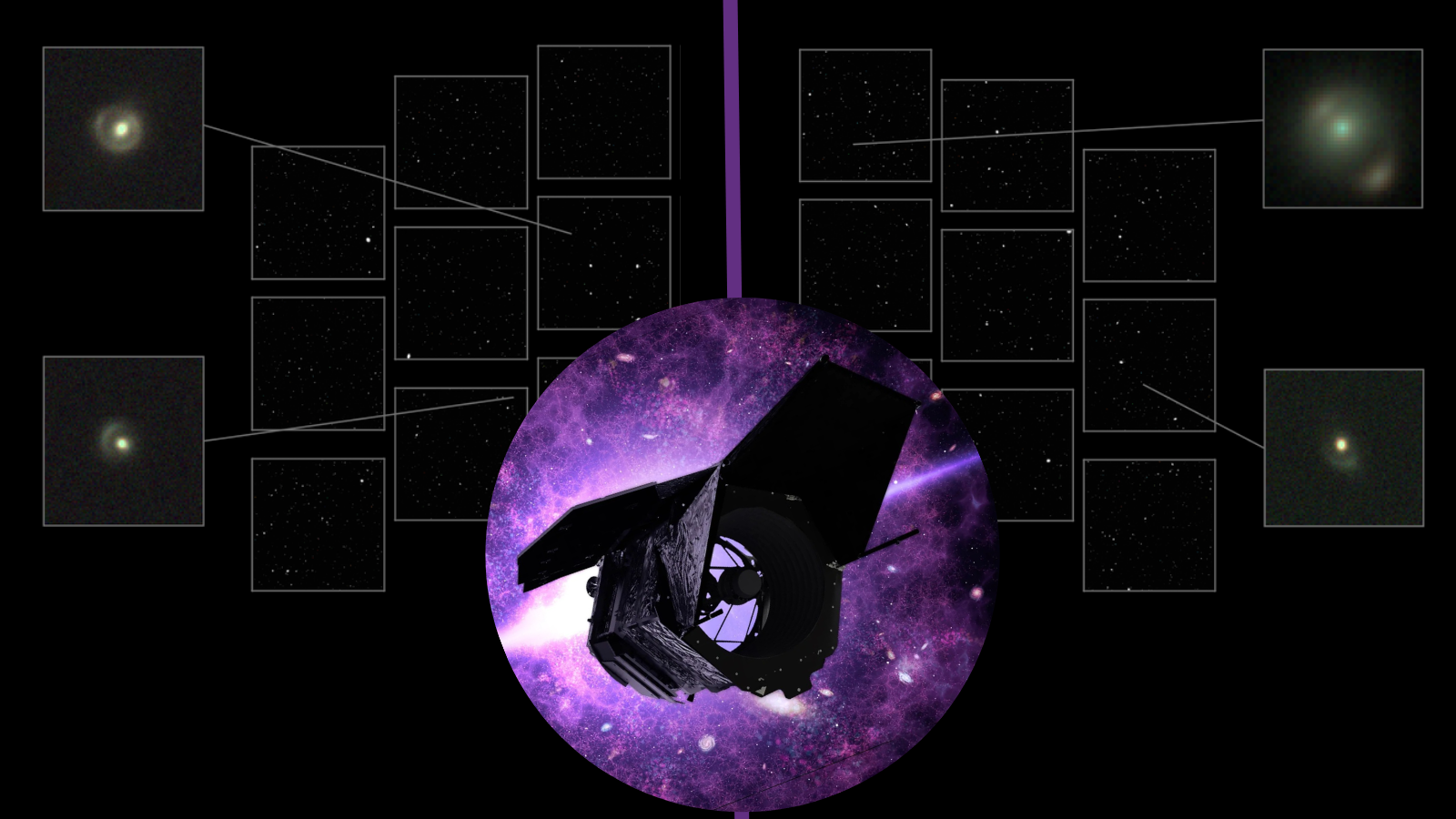Is Dark Matter Made of Tiny Black Holes?

A planet-hunting NASA spacecraft has detected no sign of moon-size black holes yet in the Milky Way galaxy, limiting the chances that such objects could make up most of the "dark matter" that has mystified scientists for decades.
Dark matter is one of the greatest scientific mysteries known — an invisible substance thought to constitute up five-sixths of all matter in the universe. It remains so mysterious that scientists are still uncertain as to whether dark matter is made of microscopic particles or far larger objects.
The consensus right now is that dark matter consists of a new type of particle, one that interacts very weakly at best with all the known forces of the universe except gravity. As such, dark matter is invisible and mostly intangible, with its presence only detectable via the gravitational pull it exerts. [Images: Black Holes of the Universe]
However, despite research from thousands of scientists relying on the most powerful particle accelerators on Earth and laboratories buried deep underground, no one has yet detected or created any particles that might be dark matter. This led Kim Griest, an astrophysicist at the University of California, San Diego, and his colleagues to investigate black holes as potential dark matter candidates.

Past research has discovered supermassive black holes millions to billions of times the mass of the sun in the heart of galaxies, but these are only detectable because they are so large, conspicuously disrupting matter around them. In theory, much smaller black holes could have formed in the early universe. These so-called primordial black holes would be far more difficult to detect, and they could potentially exist in large enough numbers to make up all dark matter.
But the new study finds no evidence to support this theory. Using NASA's Kepler space telescope, which launched in March 2009 to hunt for Earth-like planets around other stars, Griest and his colleagues have detected no sign of primordial black holes.
Over four years, Kepler monitored the brightness of more than 150,000 stars in the Milky Way to detect regular dimming caused by planets crossing in front of them. If a primordial black hole passed in front of one of these stars, the star would become temporarily brighter instead. That's because black holes warp light around them with their gravitational fields, a phenomenon known as gravitational lensing.
Breaking space news, the latest updates on rocket launches, skywatching events and more!
"Dark matter searches are normally very hard, involving experiments that take millions of dollars and decades to build," Griest said. "What's so cool and fun about this work is that we could use this experiment that was already built for completely different purposes to look for dark matter."

Until now, researchers had eliminated the chances that black holes that are approximately the mass of the moon could make up dark matter. Kepler's data show no evidence of black holes between 5 and 80 percent of the moon's mass, suggesting these black holes could not constitute most dark matter.
However, even smaller primordial black holes, ones less than 0.0001 percent the mass of Earth's moon, could still make up the entirety of dark matter, Griest said. Future missions — such as the European Space Agency's Euclid spacecraft or NASA's proposed WFIRST satellite — could look for smaller black holes than those identified by the Kepler data.
"We've ruled out a range of primordial black holes as dark matter, but have not ruled them out completely," Griest told SPACE.com. "They're still a viable candidate for dark matter."
Griest and his colleagues detailed their findings online Oct. 31 in the journal Physical Review Letters.
Follow us @Spacedotcom, Facebook or Google+. Originally published on SPACE.com.
Join our Space Forums to keep talking space on the latest missions, night sky and more! And if you have a news tip, correction or comment, let us know at: community@space.com.

Charles Q. Choi is a contributing writer for Space.com and Live Science. He covers all things human origins and astronomy as well as physics, animals and general science topics. Charles has a Master of Arts degree from the University of Missouri-Columbia, School of Journalism and a Bachelor of Arts degree from the University of South Florida. Charles has visited every continent on Earth, drinking rancid yak butter tea in Lhasa, snorkeling with sea lions in the Galapagos and even climbing an iceberg in Antarctica. Visit him at http://www.sciwriter.us
